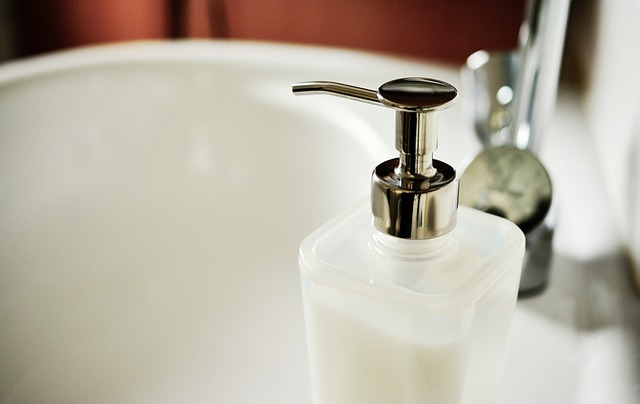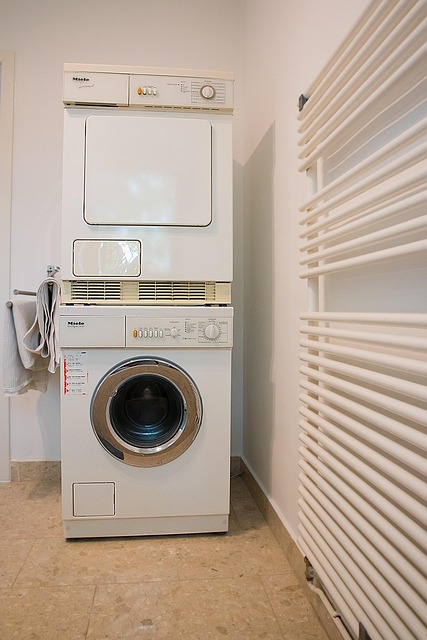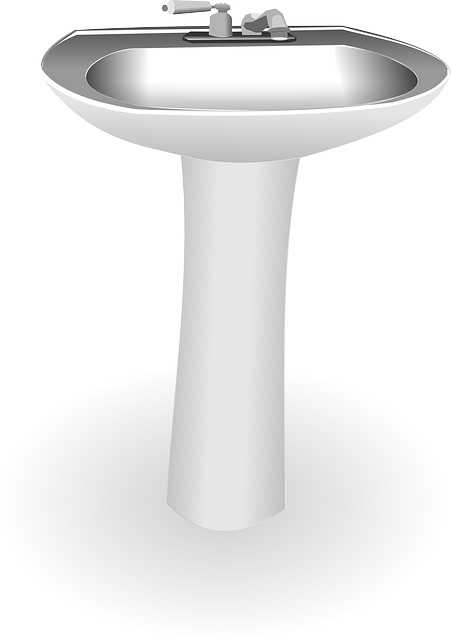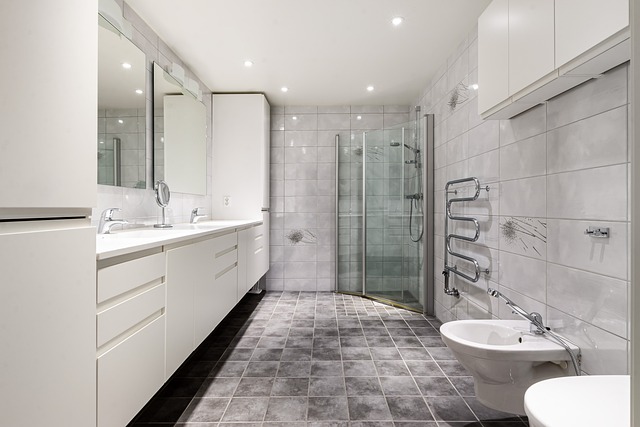Commercial bathroom tile cleaning involves tackling high traffic areas with increased dirt and stain buildup. Effective methods include regular maintenance, selecting pH-neutral eco-friendly cleaners, vacuuming first, applying solutions, scrubbing gently, rinsing thoroughly, and focusing on hard-to-reach spots. Deep cleanings with grout treatments, coupled with routine inspections and good ventilation, are crucial for long-term preservation of tile aesthetics and hygiene.
Maintaining clean and hygienic commercial bathroom tiles is essential for any business. This comprehensive guide delves into the intricacies of efficient bathroom tile cleaning, catering to diverse commercial needs. From understanding specific challenges like hard-water stains and mold growth to selecting eco-friendly products, it covers all aspects. We provide a detailed step-by-step process, restore shine tips, and offer best practices for long-term care. Stay ahead of maintenance with these insights and ensure a sparkling, healthy bathroom environment.
Understanding Commercial Bathroom Tile Cleaning Needs

Commercial bathroom tile cleaning involves understanding and addressing unique challenges that come with keeping public spaces hygienically clean. Unlike residential settings, commercial bathrooms often host a high volume of visitors throughout the day, leading to increased foot traffic and subsequent buildup of dirt, grime, and stains on tiles. This constant exposure necessitates a robust cleaning regimen capable of swiftly eliminating contaminants while ensuring tile surfaces remain in pristine condition.
Various factors contribute to the specialized nature of commercial bathroom tile cleaning. The scale of the area, often vast compared to home bathrooms, demands efficient cleaning methods that can cover large sections rapidly. Additionally, the presence of various materials, such as natural stone or porcelain, requires tailored cleaning solutions to prevent damage while maintaining their aesthetic appeal. Effective cleaning also involves addressing challenges like hard-to-reach areas around fixtures and preventing water spots, which can be more pronounced in larger spaces with extensive tile work.
The Importance of Regular Maintenance

Regular maintenance is key in keeping commercial bathroom tiles sparkling and free from grime. In high-traffic areas like restrooms, bacteria and mold can quickly build up on tile surfaces due to constant exposure to water, soap, and human contact. Effective bathroom tile cleaning practices not only enhance aesthetics but also play a vital role in maintaining a hygienic environment.
By scheduling routine cleaning sessions, you can prevent the accumulation of soap scum, hard water stains, and other unsightly marks. Regularly cleaned tiles also reduce the risk of slips and falls caused by slippery residue, ensuring the safety of patrons and employees alike. Investing time and resources in proper bathroom tile cleaning is a game-changer for maintaining a professional and welcoming space.
Choosing the Right Cleaning Products

When it comes to commercial bathroom tile cleaning, selecting the appropriate cleaning products is a fundamental first step. The right choice ensures optimal results and helps maintain a hygienic environment. For bathroom tile cleaning, opt for pH-neutral cleaners that are effective yet gentle on ceramic surfaces. These products avoid damaging the tiles while removing dirt, grime, and bacteria effectively.
Consider using environmentally friendly options, especially in public spaces, to promote sustainability. Many modern cleaning solutions are designed to be eco-friendly without compromising performance. This approach not only benefits the environment but also contributes to a healthier indoor space for occupants.
Step-by-Step Guide to Effective Cleaning

Effective bathroom tile cleaning involves a systematic approach. Begin by gathering the necessary tools and supplies, including a vacuum cleaner with a small nozzle attachment, a mop, tile-safe cleaning solutions, and microfibre cloths. Start by vacuuming the tiles to remove any loose dirt or debris. This step is crucial as it prevents scratching caused by bristles on a brush while mopping.
Next, prepare your cleaning solution according to the manufacturer’s instructions. Apply the solution to the tiles using the mop, ensuring even coverage. Let the cleaner sit for a few minutes to dissolve stubborn stains and grime. Use the microfibre cloth to scrub the tiles gently in a back-and-forth motion. For particularly tough stains, use an old toothbrush to apply more pressure. Rinse the tiles thoroughly with warm water, leaving no residue behind.
Tips for Restoring Tile Shine and Grout

To restore that glossy glow in your commercial bathroom tiles, begin by sweeping away any dirt or debris with a dry mop. Next, use a mild detergent and warm water to create a cleaning solution – avoid harsh chemicals which can damage grout lines. Apply this solution using a soft-bristled brush, focusing on corners and hard-to-reach areas. Let the solution sit for several minutes, allowing it to loosen any stubborn stains or grime. After soaking, scrub thoroughly with an old toothbrush or tile cleaning tool before rinsing well.
For grout, use a grout cleaner or baking soda paste to tackle any discolouration or buildup. Apply the cleaner using an old toothbrush and let it work for 15-20 minutes. Then, scrub the grout lines with a damp sponge or cloth, following the direction of the grout lines. Rinse both tiles and grout lines with clean water, ensuring all residue is removed. Finally, dry the area thoroughly to prevent water spots and allow the tiles to regain their natural shine. Regular cleaning and maintenance will keep your commercial bathroom tile looking fresh and inviting.
Best Practices for Long-Term Care and Prevention

To ensure long-term care and prevention in bathroom tile cleaning, regular maintenance is key. Schedule routine deep cleanings to remove built-up grime and prevent mold growth. Use environmentally friendly cleaners that are safe for surfaces and human health, as harsh chemicals can leave residues and cause damage over time. Implement a consistent cleaning schedule, focusing on high-touch areas like fixtures and countertops, to minimize bacteria spread.
Additionally, promoting proper ventilation is essential. Ensure adequate air circulation in the bathroom to prevent moisture buildup, which fosters mold growth. Encourage the use of exhaust fans or open windows during and after showers to dry out tiles quickly. Regularly inspect tiles for any signs of damage, loose grout, or water stains, addressing them promptly to avoid larger issues down the line.
